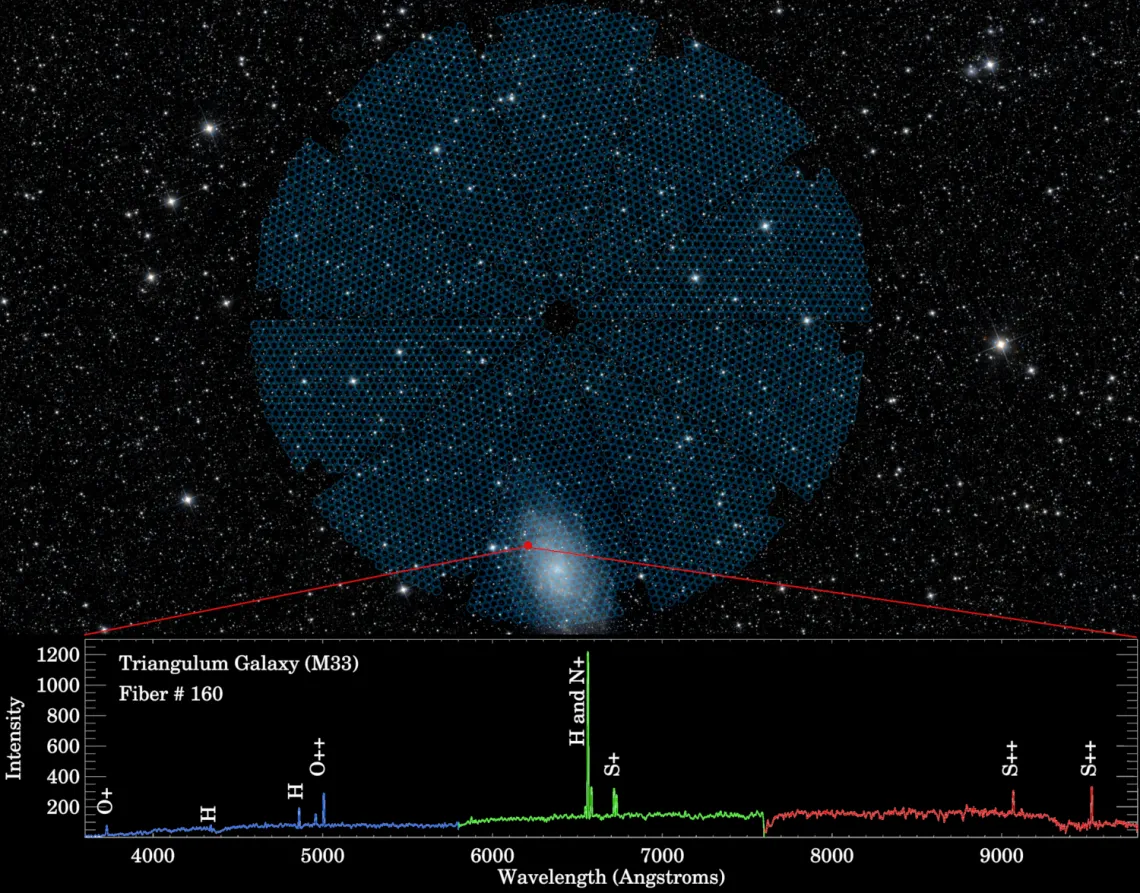DESI First Light

DESI’s 5000 spectroscopic “eyes” can cover an area of sky about 38 times larger than that of the full moon, as seen in this overlay of DESI’s focal plane on the night sky (top). Each one of these robotically controlled eyes can fix a fiber-optic cable on a single object to gather its light. The gathered light collected from a small region in the Triangulum galaxy (bottom) by a single fiber-optic cable (red dot) is split into a spectrum (bottom) that reveals the fingerprints of the elements present in the galaxy and aid in gauging the distance to the galaxy. The test spectrum shown here was collected by DESI on Oct. 22.
The new DESI spectrograph on the Mayall 4m telescope on Kitt Peak has seen first light. You can read the UArizona UANews press release and the Sky & Telescope article.
Each of the ten planned spectrographs is equipped with three cameras, one each for ultraviolet, visible and infrared wavelengths. The UV channel for each spectrograph contains a thinned, UV/Blue-sensitive, 4096x4096 CCD produced at ITL.
See the original first light press release.

